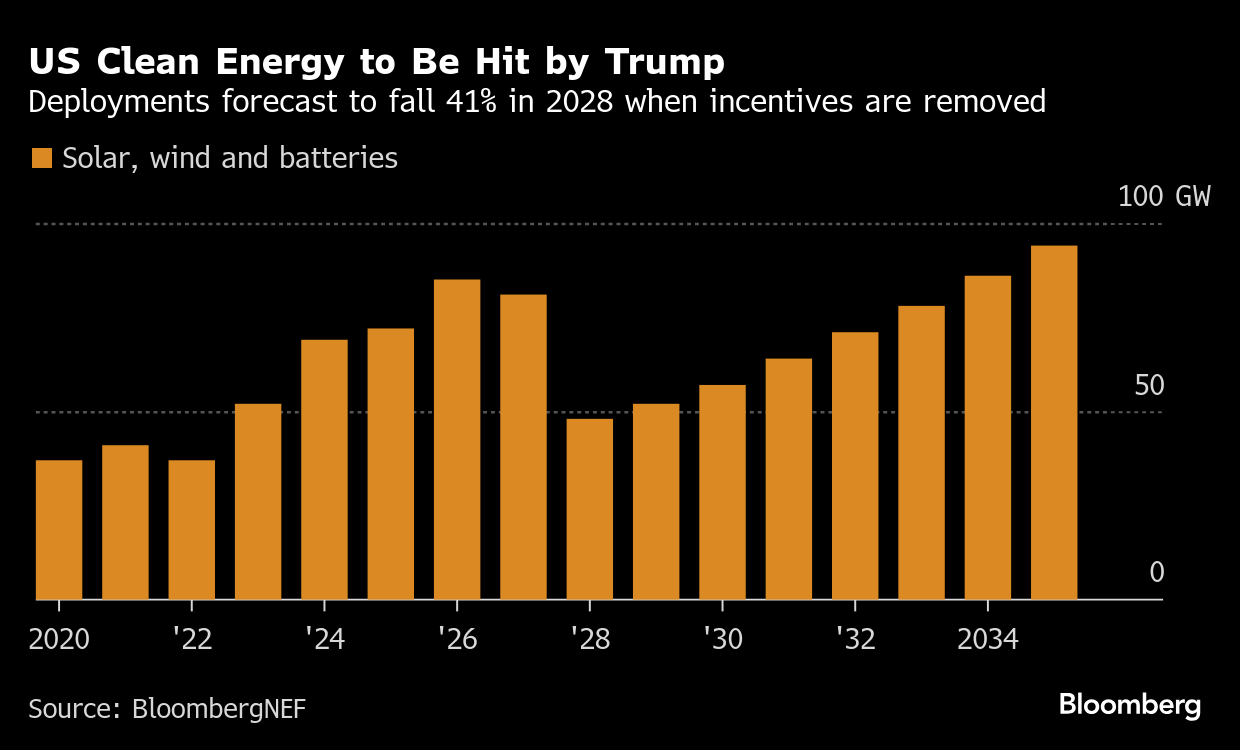Trump’s Law To Cut US Clean Energy Installs 41%, BNEF Says
(Bloomberg) -- US annual clean-energy installations will plunge 41% after 2027, due to the rapid phase-out of wind and solar tax credits in President Donald Trump’s sweeping economic legislation.
Deployments will fall to 48 gigawatts in 2028 when wind and solar projects will lose eligibility for the tax incentives, according to a report Thursday from BloombergNEF. That’s compared to 81 gigawatts the prior year as developers race to complete projects before the cutoff date.
“A short path still exists for wind and solar projects to access these credits, but it will not be an easy road ahead for most developers,” analysts with BloombergNEF wrote in the report.
While renewables are often the cheapest source of electricity, the forecast underscores the reliance clean energy still has on subsidies. Eliminating federal incentives threatens to upend the US energy industry by hampering the roll out of wind and solar, which have become the biggest sources of new electricity generation.

The decline will come at a critical moment, as the power industry scrambles to deliver additional capacity to meet an expected jump in demand from data centers running artificial intelligence.
New wind, solar and energy storage additions through 2030 will drop 23% compared to an earlier BNEF forecast as a result of the new legislation. Onshore wind will see a 50% cut compared to the prior outlook with solar and energy storage experiencing a 23% and 7% drop, respectively.
The shift will be especially hard on the solar industry. Once developers lose tax credits, only 30% of planned solar projects will be able to deliver competitive prices and are “expected to survive,” according to the research company Enverus. About 57% of wind farms will be competitive without credits, according to an Enverus report issued this week.
(Updates with comment from analysts in third paragraph)
©2025 Bloomberg L.P.





